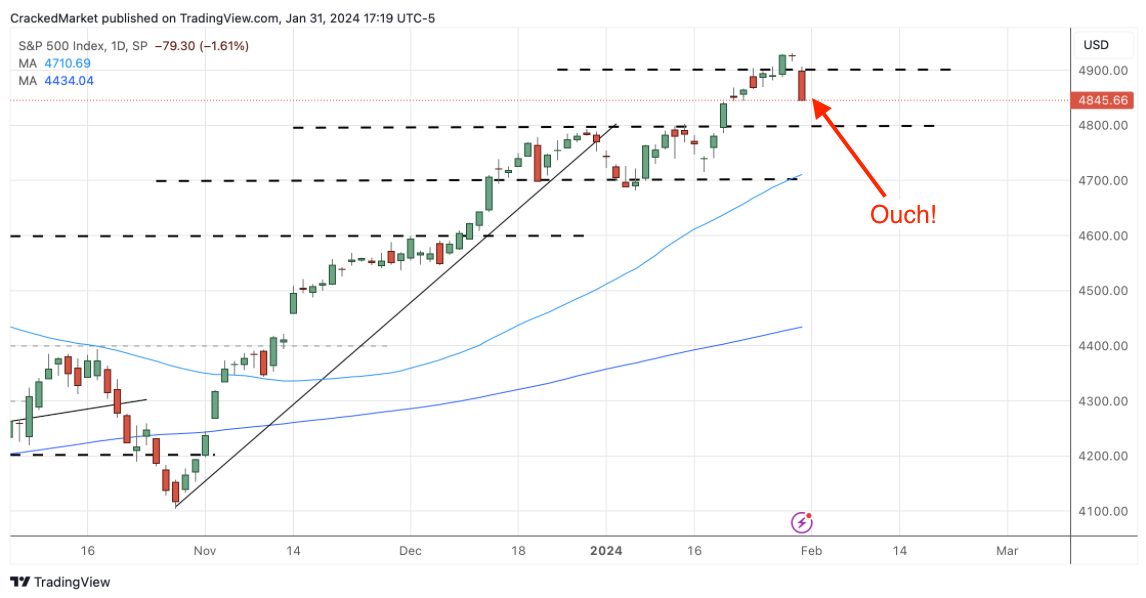A Tumultuous Week for the S&P 500
The S&P 500 corrected 1.6% on Wednesday, marking a tumultuous period for investors. This correction followed a significant rally on Monday which prompted a wave of selling later in the week. The market was rattled by a combination of “disappointing” earnings from big tech companies and Fed Chair Jerome Powell’s indication that the Fed does not intend to cut rates in March.

The market reaction to these events suggests that, in the current climate, anything short of great news is viewed as a disappointment due to the high valuation of stocks. Despite the fact that earnings from Alphabet and Microsoft were positive, they failed to meet the heightened expectations of investors.
Lessons Learned from Monday’s Breakout
Reflecting on the recent market activity, it is clear that the decision to buy the breakout on Monday was met with mixed success. Although this move was initially profitable, the subsequent downturn highlighted the volatility of the market. The decision-making process involved in this trade offers valuable insights into the complexities of stock trading.
“I have no idea how long this rally will last, but given Monday afternoon’s nice gains, my stops have already been lifted to my entry points, turning this into a low-risk trade.”
“If this turns out to be a climax top and prices crash next week, no big deal. I pull the plug at my stops and follow the market in the other direction. But until that actually happens, I’m riding Monday’s wave higher.”
It was acknowledged that purchasing the breakout could be considered a mistake, but the decision to establish safeguards by lifting stops to the entry points mitigated potential losses. This safety net, likened to a free lottery ticket, provided a buffer in the event of market volatility.
The Pragmatic Approach to Trading
The realities of the market require a proactive trading plan that accounts for potential fluctuations. Acknowledging and learning from market missteps is vital, as they form an integral part of the trading process. The decision to view Monday’s trade not as a failure, but as a learning experience, underscores the pragmatic mindset essential for navigating stock trading.
Furthermore, the willingness to embrace such instances as valuable learning opportunities characterizes the resilient and adaptive nature of successful traders. Drawing parallels with previous breakout experiences showcases the tenacity to persist and capitalize on future opportunities.
Ultimately, the ability to view trading setbacks as stepping stones towards enhanced proficiency is a fundamental mindset in the volatile world of stock trading. It is through this lens that stock traders can approach subsequent opportunities with a sense of optimism and readiness.





